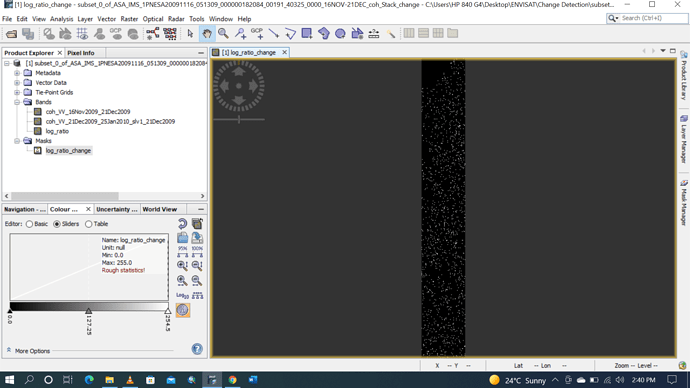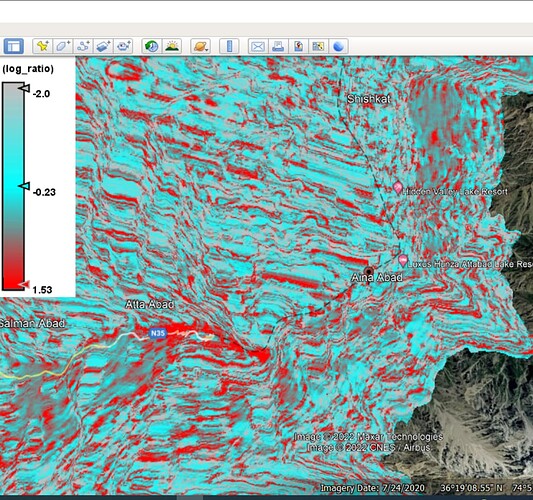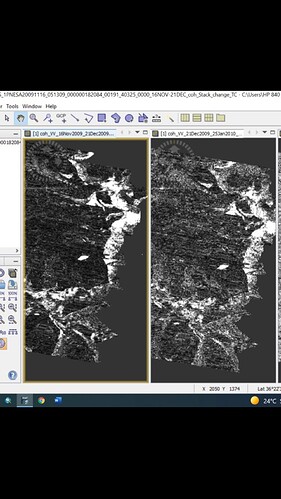Hi, I’m using ENVISAT DATA for coherent Change Detection and I’m curious about the interpretation of results as there is quite a major Landslide Event occurred. here is a log ratio change mask image attached which I’m having to understand. can someone Guide me whether results are accurate or not? also how to interpret these results in context of Subsidence or uplift? thank you
@ABraun
The results seem strongly biased by Range Doppler Terrain Correction. I guess your study area is characterized by extreme topography? You shouldn’t trust too much any values in areas of foreshortening.
Also, the change detection module compares intensities related to backscatter. Neither of them indicates subsidence or uplift (this is done with radar interferometry).
Hi Andreas Braun,
I have seen his original work, the coherent areas are similar in both pairs (before the event and after event). Here’s the screenshot
Yes the area has topography (hilly area) and major landslide occurred. From sensor perspective lots of layover and foreshortening.
His basic objective was to do subsidence mapping but when I saw the results I was impressed how accurate his map was, that’s when I suggested him to compute coherence.
Based on my knowledge an area that has been decorrelated we can’t do subsidence as scatterers orientation change (coherence is they key). Although we can interpret in terms of how much coherence is lost.
Do we discard the pairs? as we only have this SLC data available. Any possible solution? How can we explain the coherence? they’re almost identical.
@SAIM please attach that subsidence map too that you generated from SLC pairs.
Sorry, it’s not clear to me how these "original results are different from those in the first post.
It is good to combine approaches (DInSAR, coherence, intensity change) to better understand a setting, but it’s hard to judge by looking at screenshots, please provide more context.
It looks like you two are familiar with the study area way better than anyone else in this forum, so while we can guide about technically aspects, the interpretation of results in terms of plausibility is rather your job, especially if you @muddasirshah are the lecturer (sorry if I’m wrong) ![]()


